News
Cave Diving Etiquette
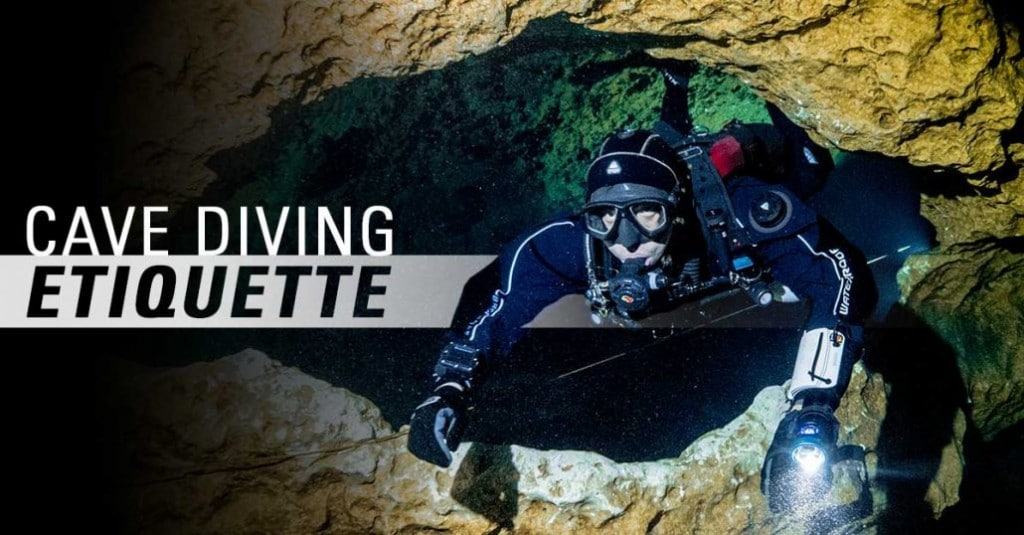
By Jon Kieren
When it comes to cave diving etiquette, people have a lot to complain about. Pages upon pages of shaming and bashing exist on the diving forums, and there are entire Facebook groups dedicated to complaining about how terrible everyone is at this recreational activity. I personally don’t feel that is a productive use of anyone’s energy and it is not what this article is intended to do. In cave diving, there are a lot of different ways to do just about everything. Put 10 instructors from around the world in a room and ask them how to install a primary reel and you’ll get 11 answers. And each response is usually completely valid based on that instructor’s experience, preferences, and the specific environment they dive in.
So why all the hostility? Why can’t we all just get along?
The purpose of this article is to outline a few basic “rules of the road” and provide a few suggestions for how to interact within the community in a positive light. While some rules of cave diving etiquette are typically common courtesy, they often stem from matters of safety. The distinctions will be highlighted in this article, and it should be noted that safety of ALL teams in the water is always the primary concern. We will not be getting into the specifics of each area of concern as much of this is covered in your cave training. We will simply highlight the key points regarding safety and etiquette.
The Primary Line
So, let’s get right into it with one of the most commonly griped about issues, the primary line. On a nearly daily basis, I witness divers and instructors ranting and raving about how lines are laid into the cave. For me, the frustrating part is not how the lines are laid, it’s the response from fellow divers.
For safety:
- Your team must be able to identify and follow the primary line sharing gas in zero visibility
- Your line must not interfere with another team’s ability to follow their line while sharing gas in zero visibility. This can be achieved by running your line away from another team’s, low to the ground, by making secure tie-offs and placements, and if crossing another team’s line is unavoidable, make sure you cross underneath it.
For courtesy of other divers:
- Pick a side and stick to it. If you start on the right-hand side of the cave, keep your line on that side until it is absolutely necessary to cross to tie into the permanent guideline.
- Keep it low, keep it neat. If your line is slack and floating mid water column, it can be very challenging for another team to run their line cleanly.
- Don’t tie in at the very start of the permanent line. Instead, proceed into the cave another 10m/33ft to 16m/50ft before tying in, as long as you do not need to cross anyone else’s line to do so. This will give other teams a bit of breathing room to tie in their own lines without needing to cross yours. An additional advantage to this is, in the event of a loss of visibility, the first reel you come across will more likely be yours, making it easier to verify.
- If there are too many primary lines installed in the cave to run your own without creating a hazard, you have a few options. Number one, wait for a team to exit and clear a path for your line. You may have to wait on the surface for a bit, but it’s far better than the alternatives of not having your own continuous guideline or creating a hazardous situation for another team. The second option would be to speak with other teams at the site to see if you can “share” a primary. If the second option is chosen, make sure to be very clear about how the primary will be marked to indicate whether there is a team in the cave or if it is clear to pull the reel.
“Right of Way”
The next topic most commonly complained about is “right of way”. Simply put, the exiting team always has the right of way. Every cave diver knows that very well. However, there are occasionally instances where the rule is not applied and people get upset. It is important to note that it is rarely an issue of malicious intent, but usually a misunderstanding or lack of awareness from the entering team, although lack of awareness should never be used as an “excuse” for improper procedures in cave diving.
For safety:
- The team entering the cave is having a fine day. If they were not, they would be turning around and exiting. However, the exiting team may have had some sort of failure on their dive and could be stressed and in a hurry.
- The entering team should always yield to the exiting team by moving off the line and shielding their lights, allowing the exiting team to pass without restriction.
- Any time the entering team is nearing a restriction or narrow passage, they should do their due diligence to check to see if there is an exiting team already in the passage. If so, they should hold on the exiting side of the restricted area and off the line, waiting for the exiting team to clear the section before proceeding.
For courtesy of other divers:
- It is common for exiting rebreather divers, or experienced divers who are not in a rush to get out of the cave, to clearly indicate that they are OK yielding to an oncoming team. In this case, they are not in distress and know they have sufficient gas to exit and are being kind to allow the entering team to proceed to enjoy their dive without waiting in line to enter. While this happens often, it can create confusion if the exiting team is not clear on their intentions.
Jumps
Well, an entire book could be written on the various methods of conducting a jump from one line to another. However, the same rules for installing a primary line apply:
For safety:
- Your team must be able to identify and follow the primary line sharing gas in zero visibility
- Your line must not interfere with another team’s ability to follow their line while sharing gas in zero visibility. This can be achieved by running your line away from another team’s, low to the ground, by making secure tie-offs and placements, and if crossing another team’s line is unavoidable, make sure you cross underneath it.
- The one addition is that you must be able to verify YOUR team’s direction of exit where the jump line meets the permanent line.
For courtesy of other divers:
- If there are too many spools installed on the jump to install yours without interfering with another team, you should re-evaluate your plan and choose another passage to explore.
Entering and Exiting the Water
When entering or exiting the water at a popular dive site, it is important to be conscious of how your actions may affect other teams.
For safety:
- Keep the stairs/exit clear. If there is an emergency, any stage/decompression/sidemount cylinders stacked up in the way will provide an additional hazard for the rescuers.
For courtesy of other divers:
- Enter the water and clear the entrance/exit so other divers can get in and out. Do not crowd the area while donning sidemount/deco/stage/bailout cylinders. Grab your gear and move away so other can enter or exit as needed.
These are just several of the many ways we can work together as a community to make this sport more enjoyable for all and reduce some of the friction seen and heard so often. If you are the victim of a discourteous diver, find a positive and productive method of educating them about their mistake and how it affected you.
To find out more about International Training, visit www.tdisdi.com.

Gear News
Go anywhere with Stahlsac
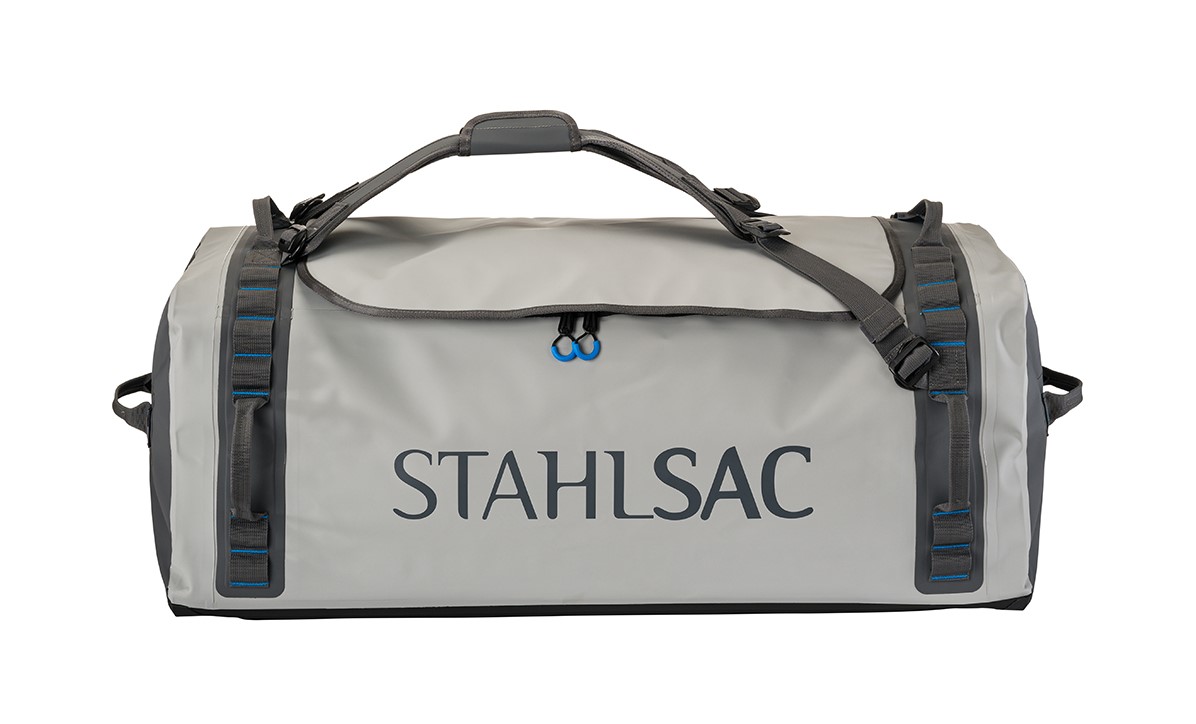
Stahlsac dive bags and travel luggage are built for our community of divers, surfers, kayakers and outdoor explorers who need bags that are constructed with durability, toughness, and 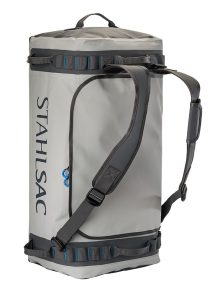 the highest quality the industry has ever seen. We were founded by one man determined to build better watersports and dive bags, and today, that mission is carried on by many. Adventure doesn’t just present itself; it requires discovery. When we design dive bags, we make sure they are tough enough for you to explore in all conditions—warm and cold, wet and dry—to the nearest and farthest reaches of the earth. And for those times you want to push the boundaries of adventure, Stahlsac dive bags make sure you can truly GO ANYWHERE.
the highest quality the industry has ever seen. We were founded by one man determined to build better watersports and dive bags, and today, that mission is carried on by many. Adventure doesn’t just present itself; it requires discovery. When we design dive bags, we make sure they are tough enough for you to explore in all conditions—warm and cold, wet and dry—to the nearest and farthest reaches of the earth. And for those times you want to push the boundaries of adventure, Stahlsac dive bags make sure you can truly GO ANYWHERE.
Abyss Duffels
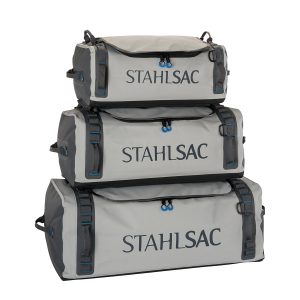 Made to be your partner-in-crime on every adventure, Stahlsac’s Abyss Duffels protects your gear from Mother Nature’s worst. Tough and 100% waterproof with double-TPU nylon material that shrugs off daily wear-and-tear, and RF-welded seams further boost the bag’s potential for lifelong exploring. Get Wet. Get Lost. Go Anywhere with Abyss.
Made to be your partner-in-crime on every adventure, Stahlsac’s Abyss Duffels protects your gear from Mother Nature’s worst. Tough and 100% waterproof with double-TPU nylon material that shrugs off daily wear-and-tear, and RF-welded seams further boost the bag’s potential for lifelong exploring. Get Wet. Get Lost. Go Anywhere with Abyss.
- A weatherproof duffel for trips, travel, and adventure
- Ultra-durable double-TPU nylon protects your gear
- Material repels water and keeps your equipment dry
- RF-welded seams are flush, tough, and waterproof
- Removable straps transform duffel into backpack
- Zippered internal stow compartments carry essentials
- External zippered flap is easy to open and close
- Welded external handles make transporting a breeze
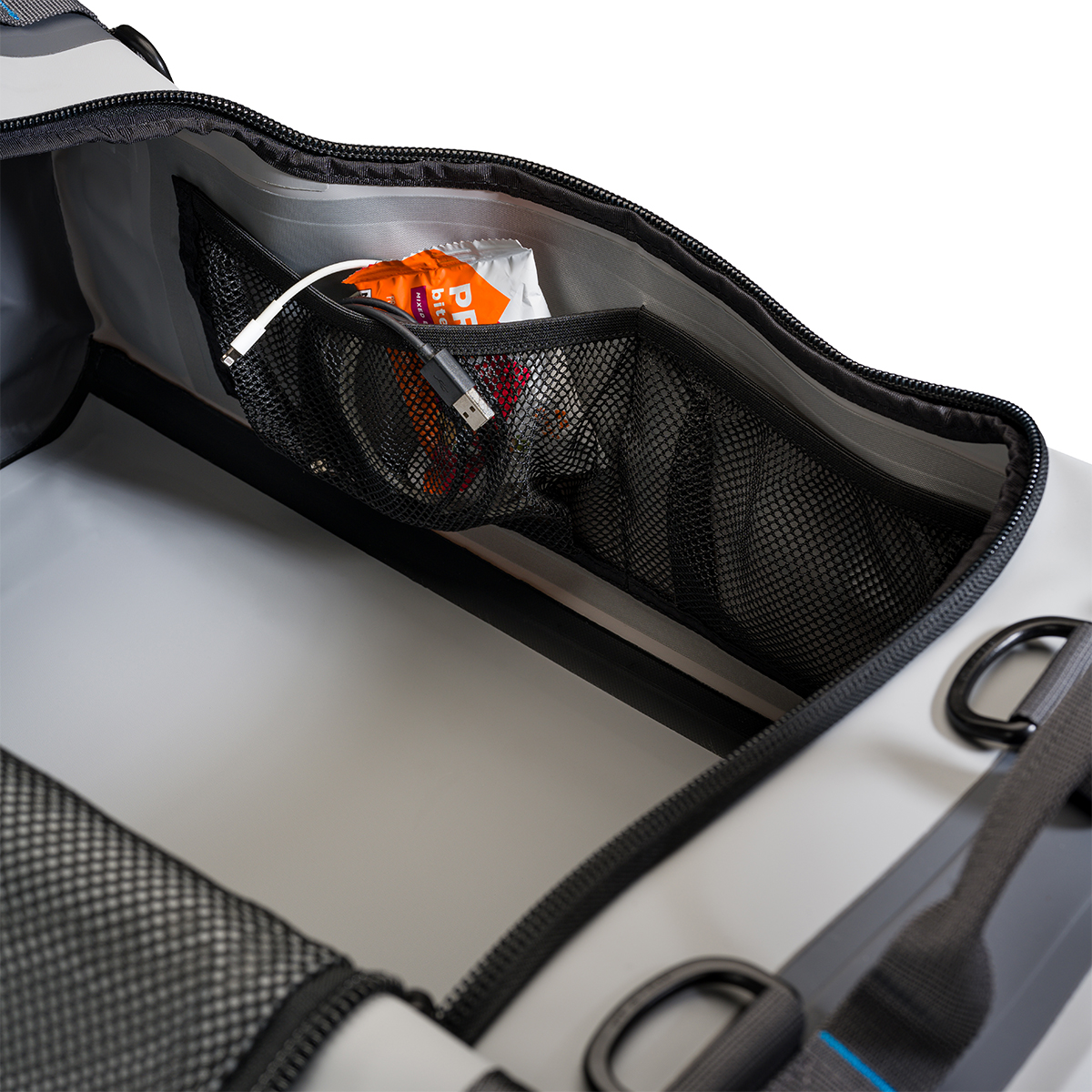
Panama Mesh Backpack
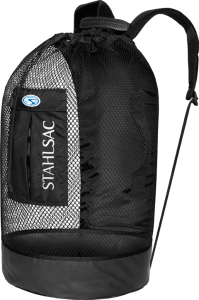 The most copied design in scuba diving, the Stahlsac Panama Mesh Backpack is the “original” design and features two high-density foam padded shoulder straps, extra durable polyester mesh, duffel bag handles and our unique zippered dry pocket inside that combines with a wet pocket outside. The bottom’s built from reinforced 18-gauge PVC nylon to combat the wear and tear of your active coastal lifestyle, and, as a bonus in every bag, we supply a 12″ x 12″ mesh drawstring satchel for extra stowing utility. Pack up your beach kit and go.
The most copied design in scuba diving, the Stahlsac Panama Mesh Backpack is the “original” design and features two high-density foam padded shoulder straps, extra durable polyester mesh, duffel bag handles and our unique zippered dry pocket inside that combines with a wet pocket outside. The bottom’s built from reinforced 18-gauge PVC nylon to combat the wear and tear of your active coastal lifestyle, and, as a bonus in every bag, we supply a 12″ x 12″ mesh drawstring satchel for extra stowing utility. Pack up your beach kit and go.
- Density foam padded shoulder straps
- Outside wet/dry pockets
- 2 Carry handles
- Tough, snag-resistant polyester mesh
- Reinforced PVC bottom
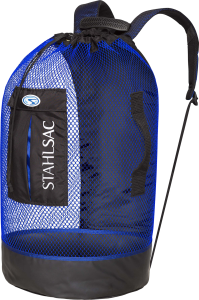
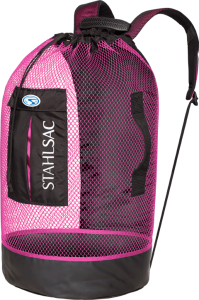
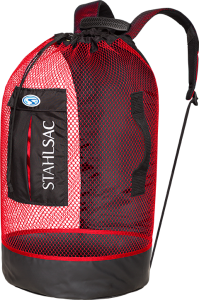
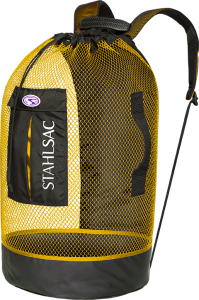
For more information about Stahlsac bags, visit www.stahlsac.com/dive-bags.
Sea & Sea is the home of Stahlsac and other leading diving brands in the UK.
Blogs
EXCLUSIVE: Jeff Goodman interviews Mark Spiers, CEO of New Scuba Diving Training Agency NovoScuba

In a video recorded exclusively for Scubaverse.com, Jeff Goodman interviews Mark Spiers, CEO of new scuba diving training agency NovoScuba.
Find out more about NovoScuba at www.novoscuba.com.
-

 News3 months ago
News3 months agoCapturing Critters in Lembeh Underwater Photography Workshop 2024: Event Roundup
-

 Marine Life & Conservation Blogs3 months ago
Marine Life & Conservation Blogs3 months agoCreature Feature: Swell Sharks
-

 Blogs2 months ago
Blogs2 months agoMurex Resorts: Passport to Paradise!
-

 Gear Reviews3 weeks ago
Gear Reviews3 weeks agoGEAR REVIEW – Revolutionising Diving Comfort: The Sharkskin T2 Chillproof Suit
-

 Blogs2 months ago
Blogs2 months agoDiver Discovering Whale Skeletons Beneath Ice Judged World’s Best Underwater Photograph
-

 Gear Reviews3 months ago
Gear Reviews3 months agoGear Review: Oceanic+ Dive Housing for iPhone
-

 News2 months ago
News2 months agoPADI Teams Up with Wellness Brand Neuro to Drive Ocean Change and Create a Blue State of Mind
-

 Marine Life & Conservation2 months ago
Marine Life & Conservation2 months agoSave the Manatee Club launches brand new webcams at Silver Springs State Park, Florida

















